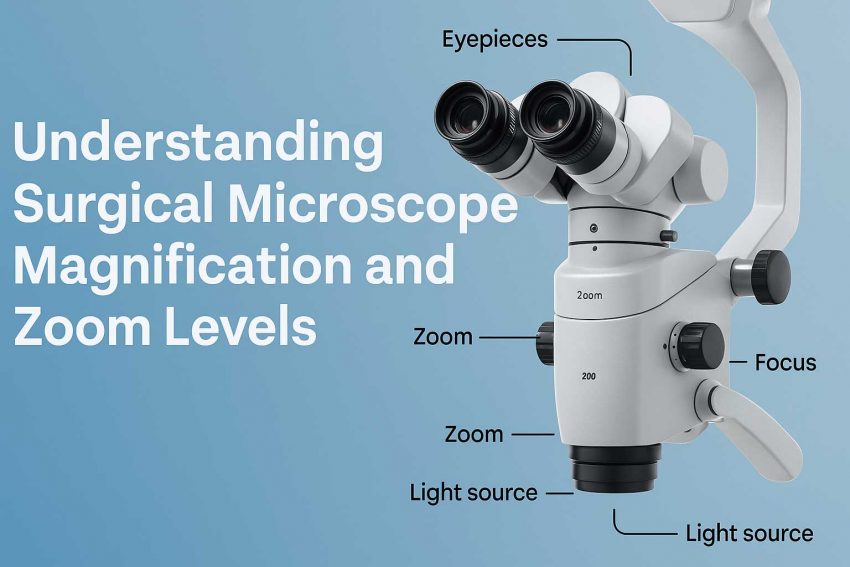Understanding Surgical Microscope Magnification and Zoom Levels, Discover how surgical microscope magnification works and learn how to choose the right zoom levels for precision in different surgical procedures.
In the world of modern surgery, precision is everything. Surgical microscope magnification plays a crucial role in enabling surgeons to see intricate anatomical structures clearly, perform delicate procedures, and reduce the risk of complications. In this article, we break down how magnification and zoom levels work, the difference between optical and digital zoom, and how to select the right settings for your surgical specialty.
What Is Surgical Microscope Magnification?
Magnification refers to the microscope’s ability to enlarge the view of the surgical field. Most surgical microscopes offer a range of magnification levels, typically from 4x to 40x. This allows surgeons to zoom in or out depending on the complexity and depth of the procedure.
Types of Zoom Systems
1. Step Magnification
This system uses predefined magnification levels (e.g., 6x, 10x, 16x) that change in steps using a rotating dial.
Pros: Simple and durable
Cons: Limited flexibility
2. Continuous Zoom Magnification
Allows smooth, variable magnification from low to high power without interruption.
Pros: Greater flexibility and precision
Cons: More complex and expensive
3. Motorized Zoom
Controlled by footswitch or handle-mounted controls, motorized zoom offers hands-free adjustment during surgery.
Pros: Convenient for long procedures
Cons: Requires regular maintenance
Optical vs Digital Magnification
- Optical Magnification: Achieved using lenses; provides high clarity and resolution.
- Digital Magnification: Achieved using a camera and display screen; can reduce image quality at high zoom levels.
For most surgical tasks, optical magnification is preferred due to superior clarity and real-time accuracy.
How to Calculate Total Magnification
Total magnification is the product of the eyepiece magnification and the objective lens magnification. For example:
Eyepiece (10x) × Objective lens (4x) = 40x total magnification
Some systems also include an internal zoom factor which modifies the total value further, especially in advanced models.
Ideal Magnification Levels by Specialty
| Specialty | Recommended Magnification |
|---|---|
| Ophthalmology | 6x – 25x |
| Neurosurgery | 10x – 40x |
| ENT | 6x – 30x |
| Dentistry | 3x – 20x |
| Plastic Surgery | 5x – 25x |
Tips for Selecting the Right Zoom System
- Consider the type of surgery and field size you work with most often.
- Look for systems with motorized zoom if you need frequent adjustments.
- Test different systems for comfort and clarity before purchasing.
Conclusion
Understanding how surgical microscope magnification and zoom levels work is essential for selecting the right equipment and ensuring procedural accuracy. Whether you’re performing deep neurosurgery or delicate eye operations, the right magnification range can make all the difference.
Explore more guides and microscope comparisons on SurgicalScopeHub.com.
